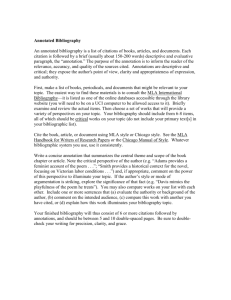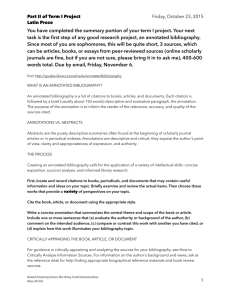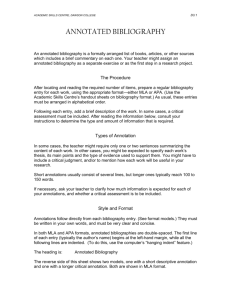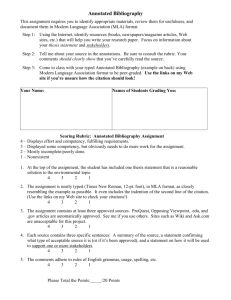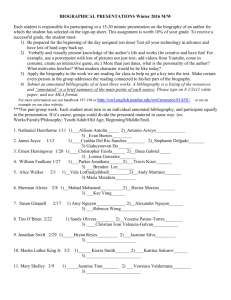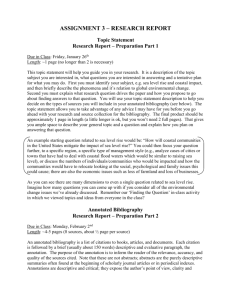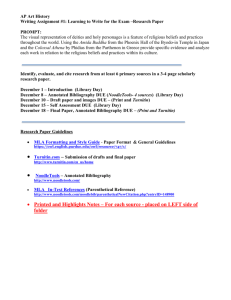Pine-Richland High School MLA Annotated Bibliography
advertisement
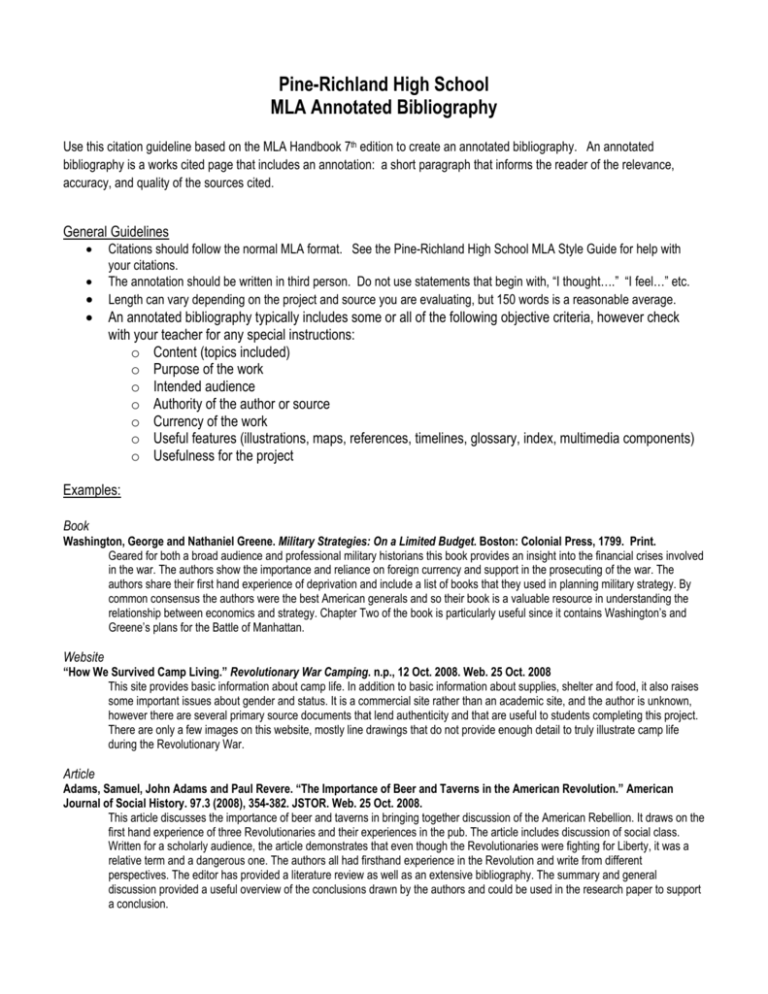
Pine-Richland High School MLA Annotated Bibliography Use this citation guideline based on the MLA Handbook 7th edition to create an annotated bibliography. An annotated bibliography is a works cited page that includes an annotation: a short paragraph that informs the reader of the relevance, accuracy, and quality of the sources cited. General Guidelines • • • • Citations should follow the normal MLA format. See the Pine-Richland High School MLA Style Guide for help with your citations. The annotation should be written in third person. Do not use statements that begin with, “I thought….” “I feel…” etc. Length can vary depending on the project and source you are evaluating, but 150 words is a reasonable average. An annotated bibliography typically includes some or all of the following objective criteria, however check with your teacher for any special instructions: o Content (topics included) o Purpose of the work o Intended audience o Authority of the author or source o Currency of the work o Useful features (illustrations, maps, references, timelines, glossary, index, multimedia components) o Usefulness for the project Examples: Book Washington, George and Nathaniel Greene. Military Strategies: On a Limited Budget. Boston: Colonial Press, 1799. Print. Geared for both a broad audience and professional military historians this book provides an insight into the financial crises involved in the war. The authors show the importance and reliance on foreign currency and support in the prosecuting of the war. The authors share their first hand experience of deprivation and include a list of books that they used in planning military strategy. By common consensus the authors were the best American generals and so their book is a valuable resource in understanding the relationship between economics and strategy. Chapter Two of the book is particularly useful since it contains Washington’s and Greene’s plans for the Battle of Manhattan. Website “How We Survived Camp Living.” Revolutionary War Camping. n.p., 12 Oct. 2008. Web. 25 Oct. 2008 This site provides basic information about camp life. In addition to basic information about supplies, shelter and food, it also raises some important issues about gender and status. It is a commercial site rather than an academic site, and the author is unknown, however there are several primary source documents that lend authenticity and that are useful to students completing this project. There are only a few images on this website, mostly line drawings that do not provide enough detail to truly illustrate camp life during the Revolutionary War. Article Adams, Samuel, John Adams and Paul Revere. “The Importance of Beer and Taverns in the American Revolution.” American Journal of Social History. 97.3 (2008), 354-382. JSTOR. Web. 25 Oct. 2008. This article discusses the importance of beer and taverns in bringing together discussion of the American Rebellion. It draws on the first hand experience of three Revolutionaries and their experiences in the pub. The article includes discussion of social class. Written for a scholarly audience, the article demonstrates that even though the Revolutionaries were fighting for Liberty, it was a relative term and a dangerous one. The authors all had firsthand experience in the Revolution and write from different perspectives. The editor has provided a literature review as well as an extensive bibliography. The summary and general discussion provided a useful overview of the conclusions drawn by the authors and could be used in the research paper to support a conclusion.

